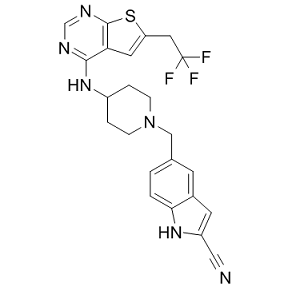Aorta in Group CE achieved sufficient aneursymal dilation, with a high success rate of AAA formation after a 20-minute incubation period. This aneurysm showed more infiltration of macrophages and neovascularization in the aortic wall, more upregulation of MMP2 and MMP9 expression in the media, but less elastin content, endothelial recovery and a lower SMC content. As reported in rat models, the elastase infusion precipitated significant loss of SMCs and endothelial denudation. Balloon injury results in complete denudation of the endothelial cells, which might lead to migration and proliferation of medial SMCs to the intima. Intimal thickening after injury consisted of an endothelial covering and many SMCs. Endothelial recovery was lowest in Group CE on day 5 due to the combined injury of elastase and calcium chloride. Reendothelialization was slower and endothelial covering was incomplete in Group CE on day 30. Additionally, the increased capillary density in Group CE might correlate with an ongoing state of inflammation. Result in the continual progress of aneurysm development, which is quite different from segments solely incubated by elastase or CaCl2. In Group E, only 1 of 6 rabbits showed successful AAA on day 5, indicating that our elastase solution of 1 Unit/mL was not effective enough to induce AAA. Also, there was no AAA development in the CaCl2-induced  rabbit, although intimal thickening and medial calcification were seen. This result indicated that periaortic incubation of 0.5 mol/L CaCl2 for 20 min causes an increase in wall thickness with extensive intimal hyperplasia and calcification, but no formation of aneurysm. Freestone et al. reported the same findings, there was no aneurysmal dilatation of the aorta after periaortic application of 0.5 mol/L CaCl2, and rapid aneurysmal dilatation only occurred after periaortic application of CaCl2 and thioglycollate in cholesterol-fed rabbits. However, the SMC, elastin and type III collagen content decreased significantly in Group C, indicating that periaortic CaCl2 incubation might promote aneurysm formation and progression when combined with elastase incubation. Of note, there was no atherosclerosis in our model, and a cholesterol-enriched diet was important in CaCl2-induced AAA formation. We did not perform any pharmacologic manipulation, such as doxycycline, propranolol or simvastatin with this model to demonstrate an impact in aneurysm formation. We will study the influence of pharmacologic intervention on aneurysm formation and development in our novel model in the future. In conclusion, we present an easy, efficient and reproducible way to create rapid dilation of rabbit aortic arteries to form a model of AAA. This simpler aneurysm model could be valuable for elucidating AAA mechanisms and therapeutic interventions, especially through drug-eluting stents or stent graft-mediated gene delivery system in experimental studies.
rabbit, although intimal thickening and medial calcification were seen. This result indicated that periaortic incubation of 0.5 mol/L CaCl2 for 20 min causes an increase in wall thickness with extensive intimal hyperplasia and calcification, but no formation of aneurysm. Freestone et al. reported the same findings, there was no aneurysmal dilatation of the aorta after periaortic application of 0.5 mol/L CaCl2, and rapid aneurysmal dilatation only occurred after periaortic application of CaCl2 and thioglycollate in cholesterol-fed rabbits. However, the SMC, elastin and type III collagen content decreased significantly in Group C, indicating that periaortic CaCl2 incubation might promote aneurysm formation and progression when combined with elastase incubation. Of note, there was no atherosclerosis in our model, and a cholesterol-enriched diet was important in CaCl2-induced AAA formation. We did not perform any pharmacologic manipulation, such as doxycycline, propranolol or simvastatin with this model to demonstrate an impact in aneurysm formation. We will study the influence of pharmacologic intervention on aneurysm formation and development in our novel model in the future. In conclusion, we present an easy, efficient and reproducible way to create rapid dilation of rabbit aortic arteries to form a model of AAA. This simpler aneurysm model could be valuable for elucidating AAA mechanisms and therapeutic interventions, especially through drug-eluting stents or stent graft-mediated gene delivery system in experimental studies.
The synergistic effects of CaCl2 and elastase stimulates an elastolytic cascade and inflammatory response in the aortic walls
Leave a reply